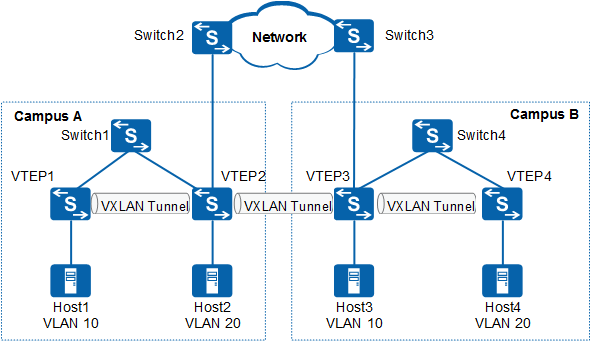(Optional) Configuring Three-Segment VXLAN to Implement Layer 3 Interworking
Context
As shown in Figure 1, BGP EVPN must be configured to create VXLAN tunnels between distributed gateways in each campus and to create VXLAN tunnels between VTEP nodes so that the inter-subnet hosts in campus A and campus B can communicate with each other.
If a three-segment VXLAN is deployed, both devices that establish a BGP peer relationship between two campuses must regenerate the EVPN routes received within their local campus before advertising the EVPN routes to each other.
Procedure
- Run system-view
The system view is displayed.
- Run bgp as-number
The BGP view is displayed.
- Run l2vpn-family evpn
The BGP-EVPN address family view is displayed.
- Run peer ipv4-address import reoriginate
The function to re-originate routes received from BGP EVPN peers is enabled.
- Run peer ipv4-address advertise route-reoriginated evpn ip
The function to advertise re-originated EVPN routes to BGP EVPN peers is enabled.
After route re-origination is enabled, VTEP 2 or VTEP 3 changes the next hop of a received EVPN route to itself, replaces the router MAC address in the gateway MAC address attribute with its own router MAC address, and replaces the Layer 3 VNI with the VPN instance Layer 3 VNI.
